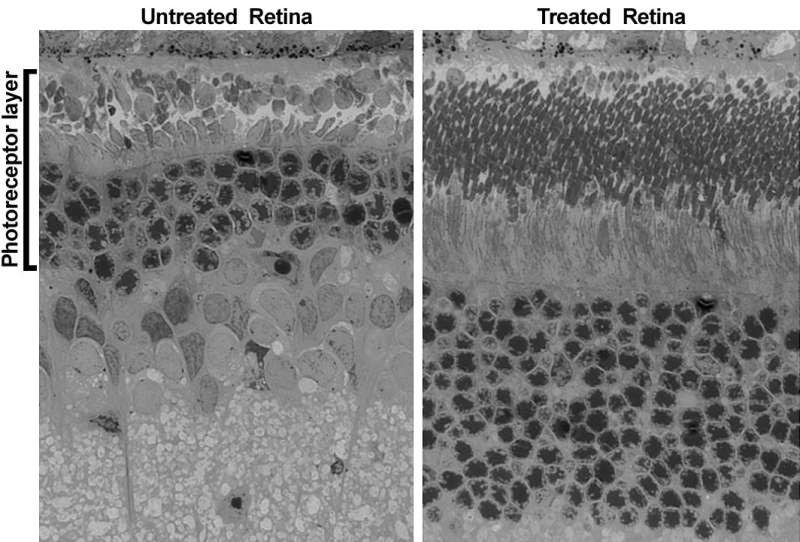Antioxidant therapy prevents devastating vision loss when added to standard-of-care on rare birth defect

A new study led by vision researchers at the Jacobs School of Medicine and Biomedical Sciences at the University at Buffalo and VA Western New York Healthcare System has demonstrated that the addition of widely available antioxidants to the current standard-of-care prevented vision loss in an animal model of a rare genetic disease.
Published in the Jan. 19 issue of Scientific Reports, the paper describes the combination therapy that resulted in preventing the retinal degeneration that can occur in babies born with Smith-Lemli-Opitz Syndrome (SLOS).
Caused by the body's inability to make cholesterol, the disease is a birth defect that results in multiple neurosensory and cognitive abnormalities, physical deformities and disabilities, including vision loss. In severe cases, it can be fatal.
"Using our combination therapy approach, we were able to prevent otherwise progressive and irreversible retinal degeneration from occurring in a rodent model of this hereditary human metabolic disease that we had previously developed," said Steven J. Fliesler, Ph.D., Meyer H. Riwchun Endowed Chair Professor, vice chair and director of research in the Department of Ophthalmology at the Jacobs School and Ira G. Ross Eye Institute Vision Research Center, and professor in the Department of Biochemistry and Neuroscience Program. He also is a research career scientist at the VA Western New York Healthcare System.
To treat the condition, dietary supplementation with cholesterol is prescribed in addition to treating the individual conditions seen in babies with SLOS, ranging from those affecting the central nervous system (including the eyes) to the heart, lungs, gastrointestinal tract and genitourinary systems, as well as the musculoskeletal system. However, Fliesler noted that outcomes from the supplementation vary widely.
"We hypothesized – based upon findings in the literature, including seminal work from my lab – gthat oxidation of a specific molecule (which happens to be the immediate precursor of cholesterol) was key to the disease mechanism," he explained. "We reasoned that blocking the oxidation with antioxidants should prevent or significantly reduce the severity of the retinal degeneration observed in the rodent model. That evidence-based, therapeutic approach worked."
The success of the approach suggests a similar type of combination therapy might also be effective with humans, but Fliesler cautioned that while promising, these results should not be extrapolated directly to humans.
"It is advisable to conduct additional preclinical studies using appropriate animal models of the disease, such as those we used in this study, in order to refine dosages and specific antioxidant combinations," he said. "Some emerging, highly potent antioxidants not yet approved for human use might in the future be appropriate to investigate a potential treatment for human SLOS patients."





















